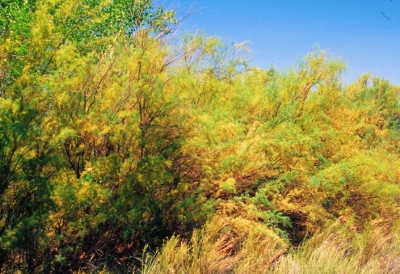Saltcedar or Tamarix
Weeds don’t have brains, but some of their survival skills would lead you to believe that they are intelligent strategists that spend hours developing ways to take over land. Noxious Salt cedar weed, also known as tamarix is a plant that has the ability to send roots as far as 95 feet underground. These roots can reach into the water table, transport water back up and then release moisture at or near the surface. Shallow roots that would otherwise weaken in times of drought are then able to absorb nutrients. This ability allows this noxious weed to survive indefinitely with little or no water.
As if that strength wasn’t enough, noxious salt cedar weed also deposits its namesake mineral (salt) into the soil around it, effectively poisoning the area so that other plants can’t grow.
Noxious Salt Cedar Weed Description
Growing as tall as 15 feet, salt cedar has slender branchlets that are covered with tiny leaves that look almost like scales. In full bloom, the plant
Even though the plant can access water deep underground, noxious salt cedar weed is usually found near bodies of water, which makes it easier to create its own colony of dense stands. Some stands are so prolific that entire lakes seem to disappear and access to the water is impossible.
The weed prefers full sun, which is one of the reasons for its fierce determination to crowd out every other plant. Shaded plants are shown to be much weaker than plants with full access to sun.
If you need to go to battle with noxious Salt cedar weed (tamarix), SprayTech, Colorado weed spraying professionals, can help. Call them at 720-248-0000 for more information.

